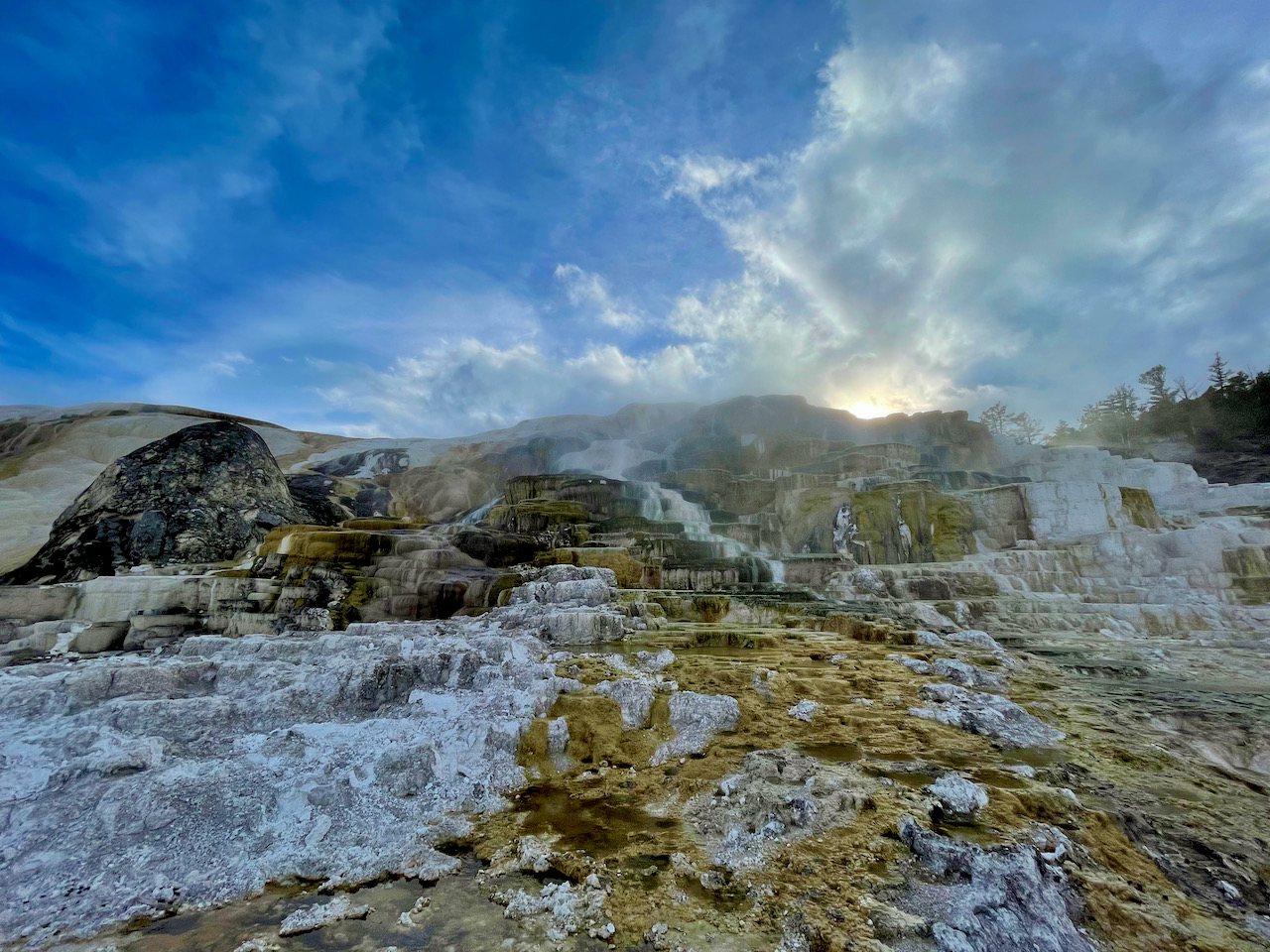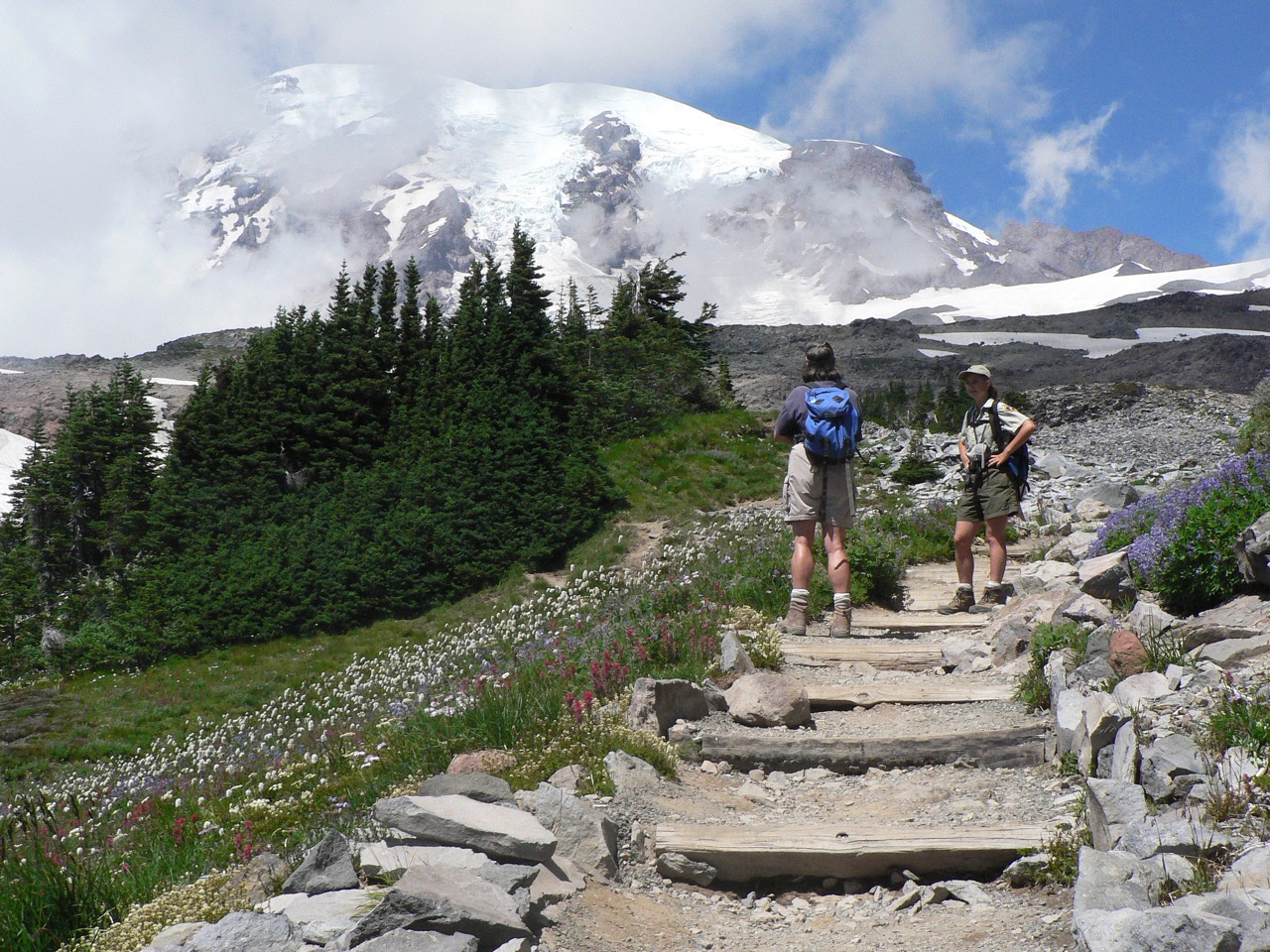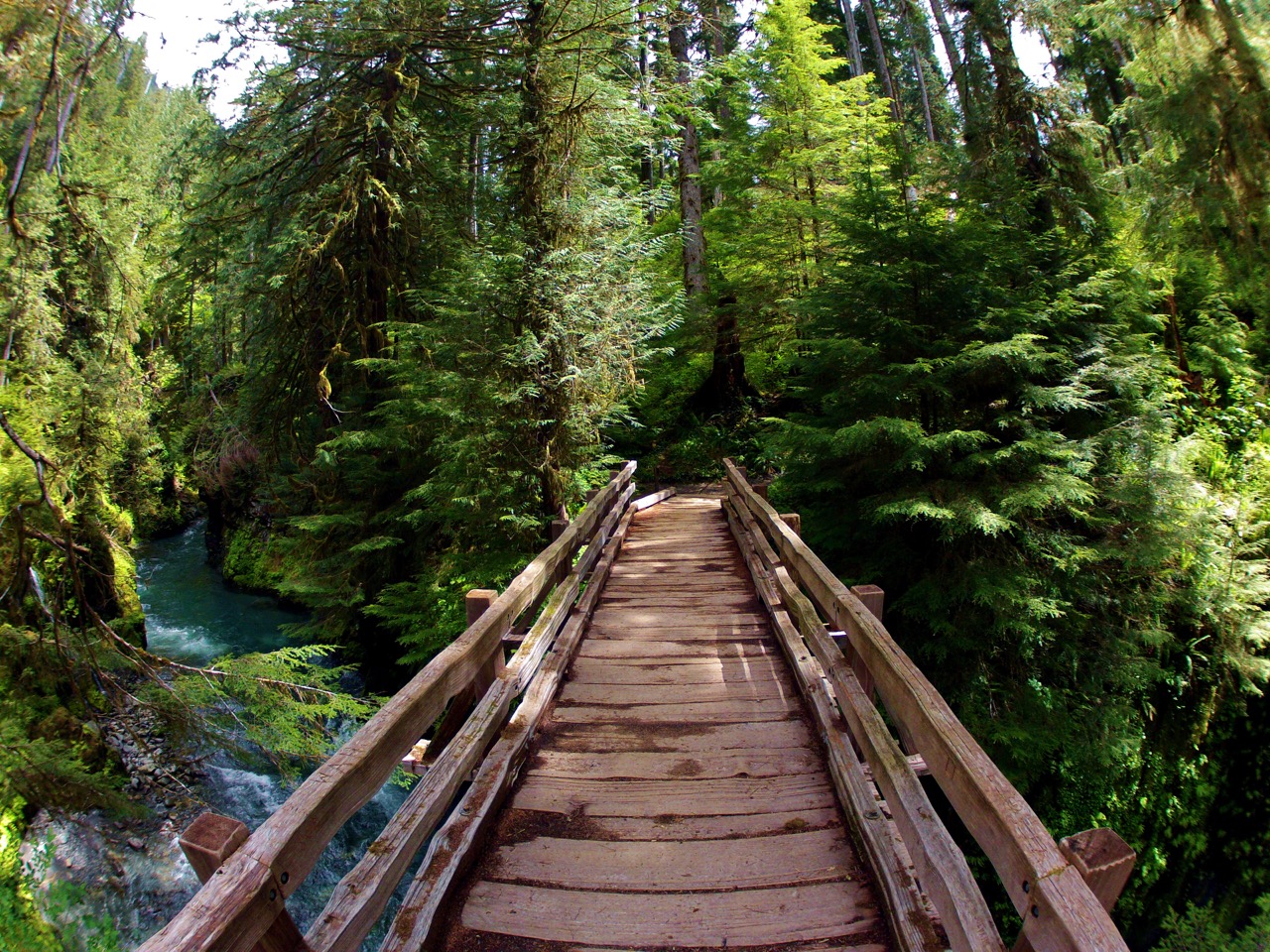This Week in Yellowstone, we continue to embrace the end of the year shoulder season by focusing on the quiet and calm. In this installment of my weekly series, I look at the infrastructure bill, let you know what the National Park is doing about the roadside bear den near Roosevelt Junction, give some tips for what to expect when visiting this time of the year, and share a few of my favorite spots to wander right now.
Give it a read, a share and get ready to visit America’s first National Park. If you want to support This Week in Yellowstone, please pick up my wildlife watching guidebook!
BIGGEST NEWS OF THE WEEK

Infrastructure Bill is Passed, More Money Coming to National Parks
Infrastructure week is finally over, after something like four years of hearing about it in one way or another. The National Park Service is expecting to receive about $1.7 billion from the passage of the bill. A large amount of that appears to be addressing the transportation needs of the park, from road construction to introductions of shuttles.
However, the introduction of shuttles appears to be only a casual mention at this point, tossed around with things like introducing electric scooter rentals. I’d love to take the idea of better buses around the parks more serious, but if they continue to be said in the same breath as electric scooters, I will not be getting my hopes up for serious changes.
Electric scooters aside, the bill is also not too shabby for some important ecological needs around the nation and the parks. According to an article by National Park’s Traveler, the bill has:
– $350 million to reduce wildlife-vehicle collisions and support enhanced connectivity to help animals adapt to the changing climate. Each year an estimated 1-2 million collisions with large species results in close to 30,000 human injuries and hundreds of fatalities. Beyond devastating, these accidents add up to $8 billion in costs to Americans.
– $1.4 billion so visitors can better access parks and other public lands, through the Federal Lands Access Program. Such transportation investments can also reduce emissions as well as congestion in some of our most visited parks.
– $3.2 billion for aquatic ecosystem restoration projects and ecosystem restoration programs in the Great Lakes, Chesapeake Bay and Delaware Basin to restore and better protect the waterways and surrounding communities from intensifying climate change threats.
– $355 million a year for large repair projects by federal land management agencies and Tribes. Park benefits could include reconstruction of the Grand Loop Road in Yellowstone and Tioga Pass in Yosemite National Park.
– $35 billion in wastewater, stormwater and drinking water infrastructure investments to help improve water quality across America, including within national park boundaries and park-adjacent communities.
Will this infrastructure bill help the National Parks transition away from visitation models that work like they were created in the 1960s, or will the problems remain? Only time will tell.
OTHER NEWS

Bear Den Near Road Leads to Serious Signage
A black bear in Yellowstone has found a perfect spot to use as a den with her offspring. Unassuming and quite tiny looking, unless you know what you are looking at, you’d be hard pressed to know that a few bears were dozing off in there. Unfortunately, it is a stones throw away from the road between Mammoth Hot Springs and the Roosevelt Junction.
I first learned of this bear den a month or so ago, when driving back from a trail adventure in Lamar Valley. Near the Petrified Tree area, a dozen or so cars were at the large pullout, with their occupants outside, looking through binoculars, camera lenses and spotting scopes. Never one to pass up a gander, I stopped and asked what they were looking at. They pointed to a small hole in the hillside and told me it was a bear den and the bear had just left a few minutes earlier. I waited around a few and continued on with my day, curious if the bear would indeed return.
Sure enough, the next week I began to hear stories and see images of the bear in the den. Last weekend, I saw it with my own eyes. Inside the tiny hole was the adult female blackberry, napping a bit. It definitely wasn’t the most exciting thing, but to see a bear in a den, without feeling in danger was an awesome thing to see.
The den is across a deep ravine from the road and pullouts. Last year, one of the wolf packs killed a bison near this spot and despite being somewhat closer than the 100 yards away the park recommends, the rangers allowed the kill to remain in the same spot, giving wildlife watchers a once-in-a-lifetime experience. The bear den is currently being treated the same way. Signs are spread out every 10 feet or so, telling of the closure of the area to anyone on foot. You can watch the den from the pullouts, but no closer. Rangers also appear to be patrolling in bigger numbers here, hopefully insuring that no-one tries to get closer.
If you do head here this week or later, always obey all signs and do not approach any wildlife. You do not want to be responsible for being the one who ends up getting the bear and offspring killed.
WEATHER FOR THE COMING WEEK
After a few days of unusually high temperatures and strong winds, normal weather looks to be returning to the Northern Range of Yellowstone. Out the Northeast Entrance, expect cold temps and snow over the early weekend, transitioning to partly sunny skies and chilly temperatures the rest of the week. In Gardiner, near Mammoth Hot Springs, enjoy a cloudy Friday and some intermittent clearing the rest of the week. The highs and the lows of the week look like this:


This is the weather.com forecast for the the towns to the park- Gardiner and Cooke City. While they don’t specifically cover the entire open sections of the park, these forecasts give a great idea of what to expect when traveling on the road between Mammoth and Silver Gate. As always, weather can and does change fast in the park, so always be prepared for anything.
WILDLIFE WATCH
Elk are hanging out in Paradise Valley north of the park, as well as the Gardiner and Mammoth areas. Near the entrance gate in Gardiner, expect to see elk and pronghorn on either side of the road. They may even be right near the Roosevelt Arch in Gardiner.
The bison are hanging out near Undine Falls, which is normal for this time of the year. From now until spring or early summer, expect to encounter a bison jam while driving between Lava Creek and the bridge over the Gardner River near Mammoth. You’ll also encounter bison around Roosevelt Junction and Lamar Valley, is keep an eye out for them while driving, as they like to be very close to or on the road.
You’ll have a good chance of continuing to see bighorn sheep near Mammoth, as well as near the confluence of the Lamar River and Soda Butte Creek. Their rut is still occurring, so you may see the rams battling for supremacy, or even the sheep mating. Who knows!
As far as wolf sightings, keep heading toward Slough Creek and Lamar Valley. They have been seen at a distance harassing bison and eating elk. Wolf sighting should continue to pick up each and every week, as their movements become more easily seen when the snow sticks around.
If you are hoping to see a bear this week, you should have a decent chance. Not great, but decent. Many of the bears are now hanging out in or right around their dens, which are usually hard to see and far from the road. However, a bear den is visible from the parking area near the turn for the Petrified Tree. Last week, I went to this spot and could see the sow laying in the tiny den. The image above is what you can see.
Want more tips and locations for wildlife sightings on your Yellowstone trip? I wrote a book for that very purpose! Pick up your digital ebook or paperback copy now!
ROADS AND CAMPGROUNDS
There are currently 52 miles of main park roads open to the public right now. They run from the North Entrance at Gardiner, Montana to the Northeast Entrance near Cooke City and Silver Gate. This road will be open unless the weather is absolutely terrible, and even then that will only be temporary. This coming week, I would not expect any serious issues on the road. Just be cautious of snow and ice, as well as animals on the road.
For up-to-date information consult the map above, call (307) 344-2117 for recorded information, or sign up to receive Yellowstone road alerts on your mobile phone by texting “82190” to 888-777 (an automatic text reply will confirm receipt and provide instructions). Anticipate possible road closures due to inclement weather and dangerous driving conditions.
Planning on camping in the park this week?
Mammoth is the only campground open in the park right now. Mammoth has not been filling up to capacity over the last week and this trend should continue until the busy season starts again in 2022. If you are hoping to camp in the cold, or planning far ahead, you can check the status of campgrounds in the park online here.
HIGHLIGHT OF THE WEEK
Before the snow falls and the temperature is truly frigid, and before the winter crowds descend on the park, the boardwalks and thermal features at Mammoth are mostly empty. Besides walking the few boardwalks that are currently open, I also strongly recommend walking the entire Upper Terrace Loop Drive. The road is currently snow free and should remain that way for most of the week, giving you a unique chance to see these features without anyone else around and without needing snowshoes or cross country skis. You’ll get a kick out of seeing Orange Spring Mound without anyone else around, as you can hear the faintest of bubbles coming from the top. One of the coolest “new” thermal features is near the parking area for Canary Springs. Instead of turning right on the boardwalk, take a short left and walk to where the waters of Angel Terrace appear to have dropped to right next to the road.
If you find yourself in Mammoth near the end of the day, consider catching sunset from either Canary Springs or Devils Thumb near Liberty Cap. With the right clouds, this can be a truly spectacular place to enjoy the dazzling displays of colors before they vanish into darkness.
TIP OF THE WEEK

This week is a great time to walk up a few closed roads to some cool spots. One of my favorites that will only get better with each passing week is to walk up the now closed road to the Petrified Tree. The walk to the tree is only a half a mile, but gets you away from the road and the noise. While you may not be alone the whole time out here, the walk is a great place to wander toward the wilds of the park, letting you listen for birds, search for animals and enjoy a leg stretch. For those who need more than a walk that is less than a mile, continue on to Lost Lake from the Petrified Tree. The walk is 3.6 miles out and back from the tree, passing along a small creek before coming to an open valley where you will find the lake. I often see bison and coyotes on this hike, and have also enjoyed seeing wolf tracks in the mud and/or snow. This is part of a larger loop trail that I will be discussing in a few weeks. Until then, enjoy walk to the tree and the lake!
WANT TO KNOW MORE?
Curious about something not mentioned in the post?
Send me an email or message on social media and let me know how I can help.






